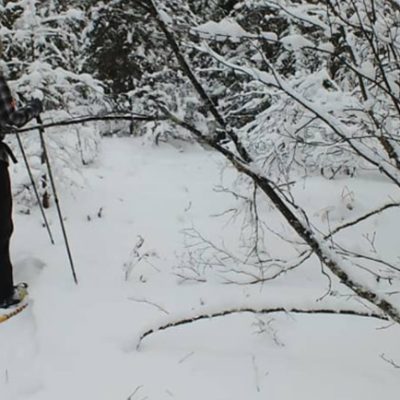
Discover your Eastman Adventure: Snowshoeing 101
Snowshoeing was once an essential mode of winter transportation but has now turned into a fun recreational activity!

Snowshoeing was once an essential mode of winter transportation but has now turned into a fun recreational activity!
Snowshoeing was once an essential mode of winter transportation but has now turned into a fun recreational activity! It’s a great outdoor opportunity to do with your friends and family, a fantastic way to connect with nature, and not to mention an amazing exercise!
You can snowshoe practically anywhere! Whether you want to hit one of the local trails or just do some exploring. In the Eastman Region, we have incredible trails waiting for you! For some destination ideas, visit the below blogs.
5 Amazing Eastman Snowshoeing Trails
Discover your Heart in: Eastern Manitoba’s Trails
Fall in Love with Eastern Manitoba’s Trails
View this post on Instagram
View this post on Instagram
Obviously, you will need a good pair of snowshoes. Picking the right snowshoes for you depends on your weight, terrain, and snow conditions. But we suggest if you are just getting into snowshoeing to rent some gear. SAYZOONS and Winnipeg River Recreation District both offer rentals for snowshoes and more outdoor equipment.
You’ll need to wear warm, waterproof boots and dress in layers that can handle cold, wet conditions. But more on that later.
This is optional but is highly recommended; bring adjustable poles with snow baskets is always a plus. They not only provide you better balance, but they also help give your upper body a workout.
And, of course, don’t forget to bring your outdoor essentials:
View this post on Instagram
View this post on Instagram
The million-dollar question when people are getting ready for a winter outdoor adventure; what on earth will I wear? But when you really look at it, it is quite simple!
For winter activities, most people are either wearing wrong/harmful clothing or too much clothing. The goal in the winter months is to stay warm AND dry – not only from the elements but also from sweat. As unpleasant as it sounds, you should dress, so your body feels chilled at the start of your adventure when doing any winter activity. Eventually, your body will get used to the chill, and, especially if doing a physical activity like cross-country skiing, your body will warm up. If you still find yourself shivering too much, you can always put on another layer and, of course, discard a layer if you find yourself overheating.
Don’t forget to dress in layers and avoid cotton. Layers are a beautiful thing, and we don’t mean in a fashion sense. For a base layer, wear something lightweight, comfortable, and warm even when it gets wet. Keep in mind that wool is a great option for a base layer, so your body temperature stays regulated. Other good materials for base layers are silk and various synthetic material.
Your middle layer traps air, which is what keeps you warm; the more air you trap, the warmer you’ll be. Natural or synthetic materials design for this purpose and are breathable are ideal. Middle layers should also allow the transfer of the moisture wicked through the base layer to continue its journey away from the body. Goose down, fleece, and wool are good options of material for the middle layer.
Your outer layer is designed to protect you from the elements. It should be durable and breathable and protect you from the wind, rain, snow, and branches. Something simple like a windbreaker, rain jacket, and winter jackets designed as “outer shells,” which tend to be more durable. Also, this layer should be waterproof. Fabrics like Gortex are perfect for this layer. Keep in mind that the outer layer isn’t designed to be thick or warm (as this is what the middle layer is for).
A huge, mega no-no is using a cotton layer. Once cotton gets wet, it stays wet, making you very cold and shivering.
Here are some other clothing items needed for your experience.
View this post on Instagram
View this post on Instagram
While snowshoeing is fairly simple, there are some techniques you should keep in mind. These techniques will make your snowshoe adventure enjoyable, fun, and safe. Watch the video below to start your experience!